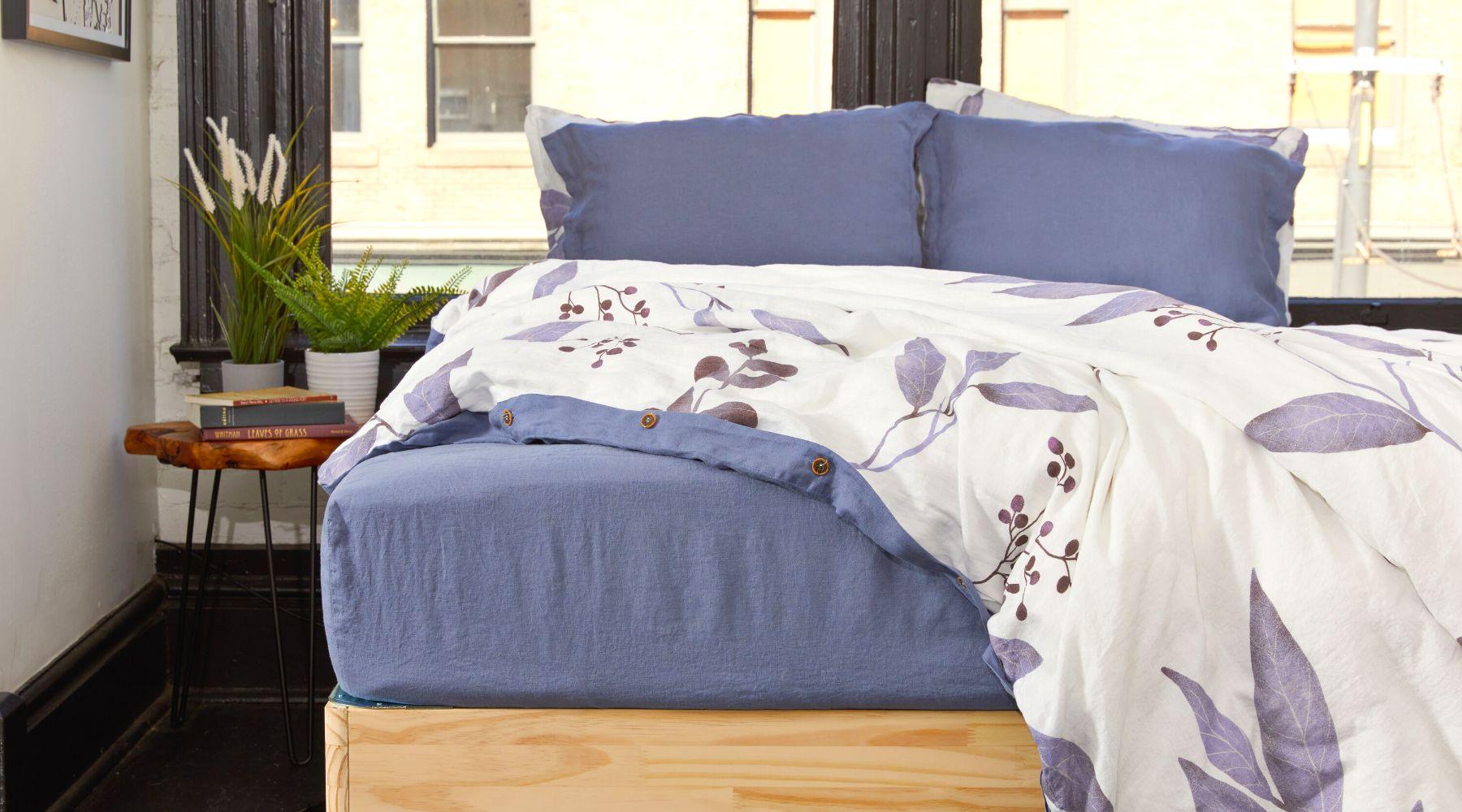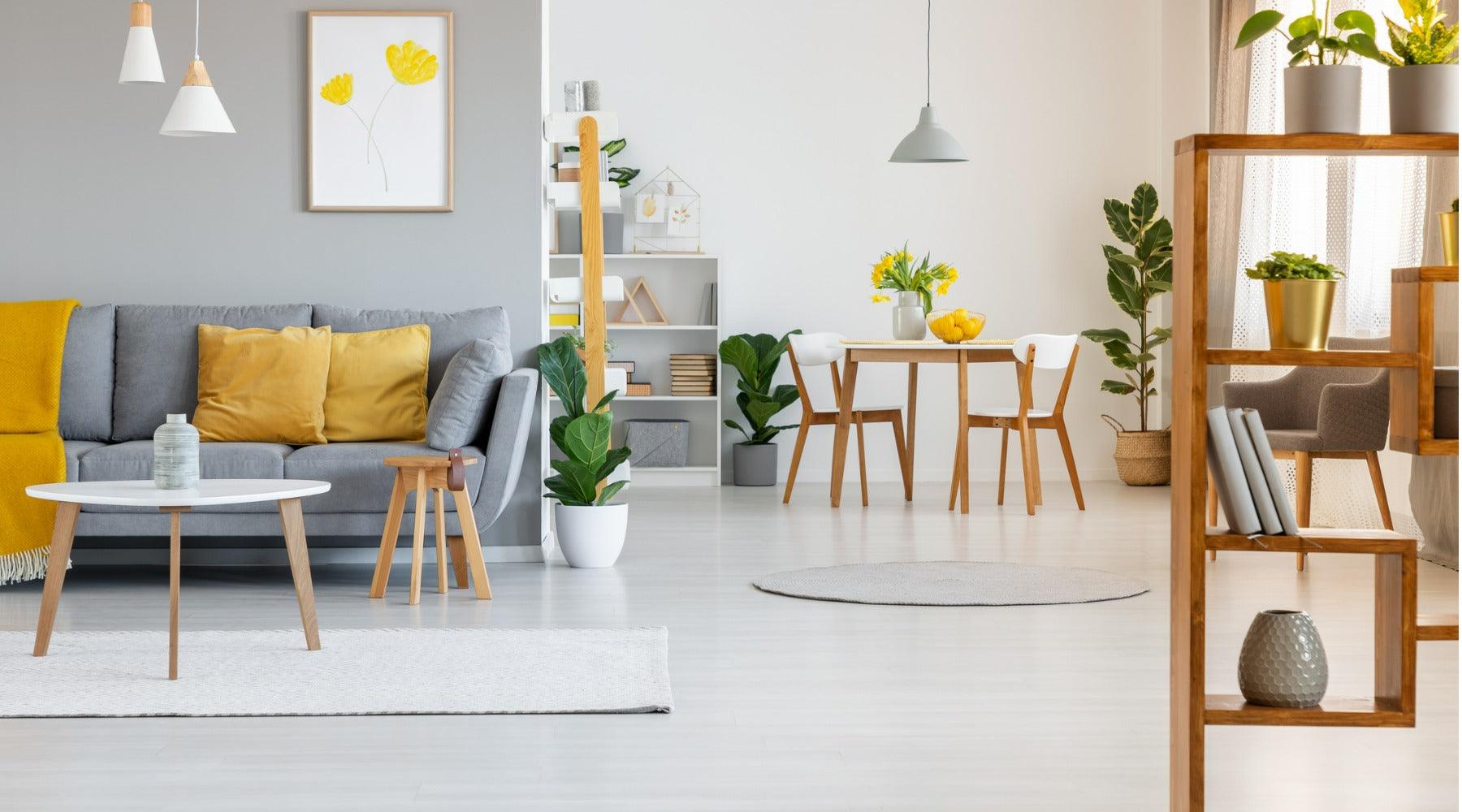
Is Linen a Good Choice for Bedding?
There are so many textiles for bedding these days, it can be difficult to determine which is best. We'll help you sift through the noise, explaining why organic European linen rises above the rest.
What’s Wrong With Cotton?
There’s a reason why cotton is so popular as a bedding fabric: it’s cheap to produce and an efficient thermoregulator (though not as efficient as linen—more on that below). But what seems cheap on the surface comes at great human and environmental cost.
Cotton is a magnet to pests; it attracts bollworms, stink bugs, and many others, which can only be contained using pesticides. Cotton production accounts for $2-3billion in pesticides every year—about 16% of total world pesticide use. The pesticides used in cotton production have been linked to cancer, infertility and birth defects.
Cotton production is historically linked with slavery—but those links are not confined to the past. In India alone, an estimated 450,000 children work in cotton factories for nine to 13 hours per day—90% of them under debt bondage.

Cotton needs heavy irrigation—just one cotton T-shirt requires 713 gallons of water to produce! Cotton farming in developing nations has caused entire bodies of water to disappear, such as the Aral Sea in Central Asia. The disappearance of this once 26,000 square mile sea caused the extinction of 24 species of native fish, with many more fish and bird species pushed to the brink.
Linen—the Sustainable Choice
At The Modern Dane, our organic linen duvet covers are made from flax grown in France, Belgium, and the Netherlands. Flax is a naturally pest-resistant crop that needs no artificial irrigation—it’s also carbon-negative, as flax fields capture more carbon than is produced during linen production. Linen is zero-waste, as the leftover parts of the plant are put back into the earth to fertilize next year’s crop.
All organic European linen conforms to the stringent regulations of the European Flax charter. This guarantees that your linen is GMO free and has been produced without artificial irrigation or waste. At The Modern Dane, our organic linen bedding is also certified by GOTS and OEKO-TEX, meaning that it’s produced without harmful chemicals, in factories where workers are paid fairly and work reasonable hours.
Isn’t Linen Expensive?
Organic linen is usually more expensive than cotton and man-made fabrics—at least initially. Many factors contribute to the price of linen: fewer government subsidies compared with cotton, lower yields from organic farming and—most importantly—fair pay and humane working conditions for workers. Once you consider factors such as cost per use, environmental cost, and linen’s health benefits, linen is better value than it appears.
Rather than looking at the upfront cost, it’s best to evaluate textiles by “cost per use”—how many times will you use the item before you need to replace it? High-quality cotton bedding will last around five years before it starts to pill and needs to be replaced. Linen, on the other hand, will last for generations if properly cared for.
Is Linen Soft?
Linen used for sacking feels rough, due to the thickness of the fibers and a naturally occurring substance called pectin, which makes the material feel stiff. Don’t worry—we don’t use that type of linen to make bedding! Linen bedding uses fine, long flax fibers, which are separated from short, coarse sackcloth fibers by a process called scutching. They’ve got all the strength but none of the roughness.
However, some pectin still needs to be removed, so we’ve done the work for you—our organic linen bedding is pre-washed to remove most of the pectin before it gets to you, a process known as garment washing. The pectin that remains will break down with each subsequent wash, so your linen will get even softer over time.
Sleep Better With Linen
Linen is not just soft and long-lasting—it’s an excellent thermoregulator. It’s all down to linen’s natural properties—pores along the length of each strand allow the heat from your body to pass through in warm conditions and traps it in cool conditions. These same pores also transport moisture away from your body, so you’ll remain dry throughout the night. Though it’s better known as a summer fabric, linen is also suitable for the colder temperatures of winter—so there’s no need to spend extra money on a separate winter bedding set.
Linen’s thermoregulating properties allow you to enjoy the benefits of better sleep—better mood, better physical health, and more energy to focus on what’s important in life.
Have we convinced you that linen is the best bedding choice? Have you already made the switch? Let us know on Instagram, Pinterest, Facebook, or Twitter!







Leave a comment
This site is protected by hCaptcha and the hCaptcha Privacy Policy and Terms of Service apply.